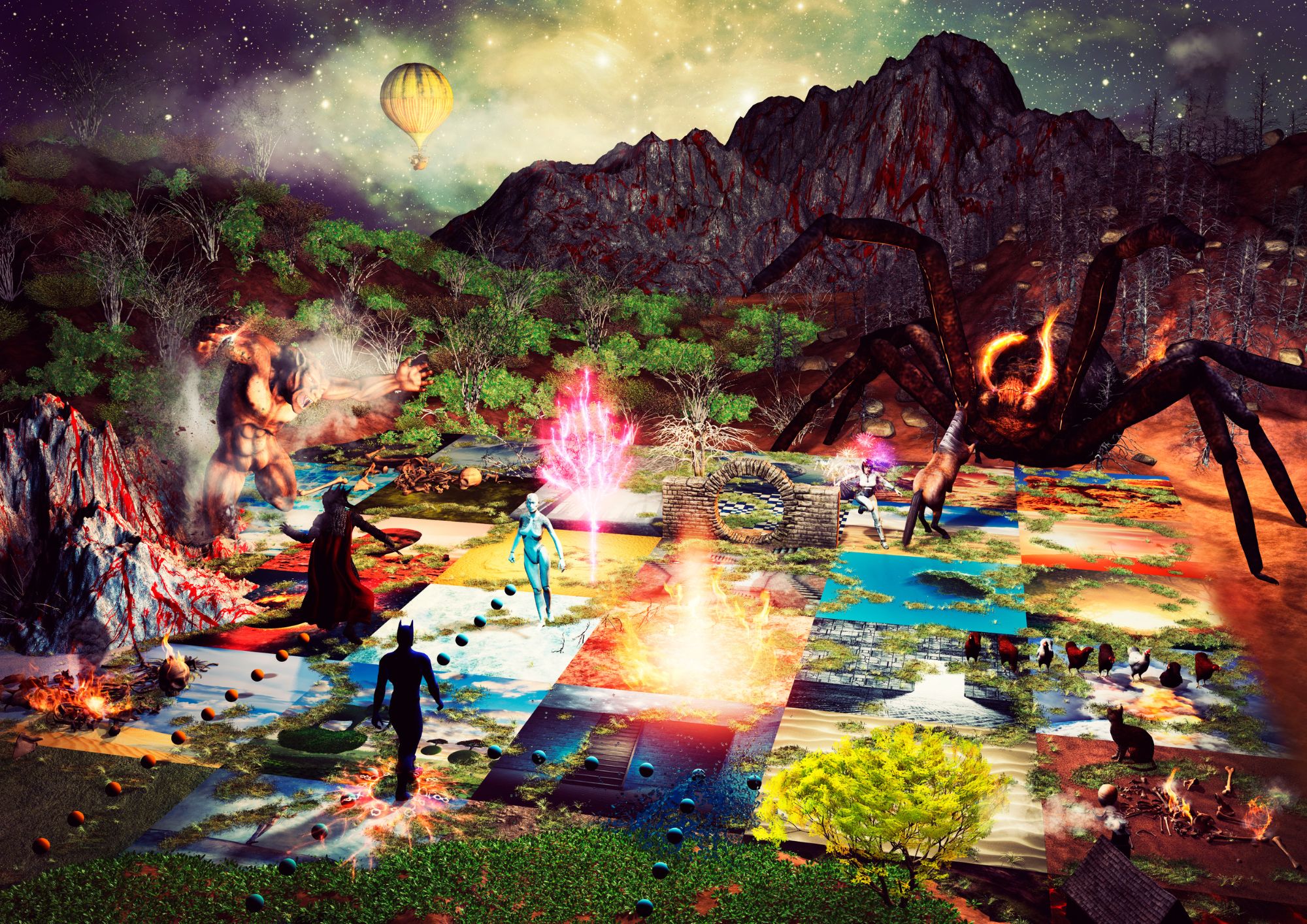The guide for video game professionals
This guide is for all teams wanting to integrate representations of a more sustainable and inclusive society into their games and reflect upon the impact of their studios and games.
This questionnaire invites you to reflect upon your games and practices without hindering your creativity and without there being any right or wrong answers.
The two-part guide addresses both creative elements and environmental and social responsibility to promote dialogue between industry professionals and create a global, unified dynamic.
You will find a summary of the guide on this page. The full guide is also available for download. This questionnaire is not an exhaustive list. Feel free to make it your own and use it to guide you in your goals, based on your unique situation.

1. CREATIVE ELEMENTS
You’re a narrative designer, game designer, editorial designer, artistic director, etc. Your creativity and your games influence the players who enter your imaginary world. If you’re looking to incorporate elements of a more inclusive and sustainable society into your games, this guide is for you.
Part 1 includes 3 themes for reflection based on the cornerstones of your game: the player experiences, the world setting and the character’s profiles within your game.
What experiences do you want your players to have?

Each gameplay element you create determines your players’ mission within the game and impacts their feelings, desires and behaviours.
This first chapter will help you define what you want them to experience, the objectives you set for them, their awareness of social and environmental issues and the consequences of their choices.
Players will draw different conclusions from the experiences provided in the games they play which, in turn, will affect how they view society in the real world.
Few key figures
78.6%
of players surveyed believe that games can help learn more about the environment. Playing for the Planet Alliance, Player Survey, Green Game Jam 2022
60%
of players exposed to content related to global warming in a game say they have changed their real-life behaviours. Yale Program on Climate Change Communication / Unity – 2022

What world setting did you create for your game?

The virtual universe you create for your players can be realistic, fantasy or a bit of both. Regardless, the game setting will have an impact on players’ imaginations and how they perceive reality.
This section of the guide provides questions to reflect upon the components that make up the game setting, including the social organisation and its relationship with the environment, lifestyles, interactions between the characters and the world.
Rather than creating smooth, predictable universes, these questions promote contemporary reflection to help designers imagine a world more conscious of planetary boundaries and the impact of human activity on the environment.
Few key figures
81%
of players surveyed say they would be more likely to play games with environmental themes. Playing for the Planet annual impact report, 2022
1.8
At the current level of global consumption, we would need 1.8 Earths to meet our needs (5.1 Earths if every human consumed like an American). Article on Earth Overshoot Day, 2022
46%
of players surveyed want to see environmental content in their games, as long as it fits into the game’s universe or narrative. Playing for the Planet Alliance, Player Survey, Green Game Jam 2022
69%
of vertebrate populations disappeared between 1970 and 2018. WWF, 2020

Who are the characters in your game?

Parity, inclusion, disability and cultural, ethnic and social diversity… Our history and societies are the product of a profound diversity that contributes to their strength and value.
The goal of this chapter is to reflect upon how your characters are established, regardless of game type, and whether they reflect our social diversity.
Without imposing quotas, these questions allow you to explore character variation and opportunities for customisation as well as their characteristics, the stereotypes they can convey and how this impacts the narrative, gameplay and your game setting.
Few key figures
40%
of players in the US prefer to have the ability to completely customise their character, most preferring characters that look like them. Newzoo, 2022
5%
of the top 50 best selling video games offer players the unique opportunity to play female characters. 21% allow players to play male characters. EDHEC Business School, 2022
20%
of characters studied were People of Color (POC), compared to 17% in 2005. AoIR Selected Papers of Internet Research, 2020
70%
of playable characters in the 51 games studied are male characters. Le gaming à l’épreuve de la Parité, Assises de la parité “Transformation”, 2023

2. SOCIAL & ENVIRONMENTAL RESPONSIBILITY
You’re part of the publishing and support professions. You’re aware that your economic activity has an impact on the planet, and you also want to take care of your team and support them in dealing with social issues.
Part 2 includes 2 themes for reflection based on the social and environmental commitments of your studio and your games and provides tools to engage your teams in a unified approach over the long term.
Studio social & environmental responsibility

Like all human and economic activities, video games have a significant environmental footprint and social responsibility. This section helps deepen your awareness of your level of commitment and of additional actions to pursue.
It also aims to include all your teams and providers in this process to identify areas where progress can be made to reduce the carbon footprint of your activities or to welcome more diverse teams.
These questions represent a starting point for identifying elements that can be expanded upon and supported by sustainable production professionals who can help apply this approach on a larger scale.
Few key figures
56%
of gamers surveyed believe that the gaming industry has a responsibility to take action regarding climate change by reducing its own carbon emissions. Yale Program on Climate Change Communication / Unity – 2022
24%
of employees at video game development companies in France are women, compared to 14% in 2019. SNJV, 2023
3.5%
Technology’s share of global greenhouse gas emissions. The Shift Project, 2021
800
kg of resources are needed to manufacture a 2 kg computer. ADEME Report, 2020

Game environmental & social responsibility

In addition to the studio’s commitment, each game comes with its own environmental impact considerations. Design choices, the gaming platform and the game mode all have a carbon footprint that could be measured and reduced from the outset through upstream discussions with the creative team.
Reflecting upon a game’s format as well as its creative elements creates a unified social and environmental responsibility dynamic while retaining the narrative and gameplay elements that make a game successful. This theme also prompts reflection about how to create bridges with reality through an impact campaign.
Few key figures
60
to 90% of a game’s total carbon emissions come from its use phase, regardless of the gaming method used (download, disc or cloud). University of Surrey, 2020
200
MWh per day were saved by Epic Games’ player base, as a result of changes made by developers to limit Fortnite’s energy consumption on Xbox, PlayStation and PC. Reducing Fortnite’s power consumption, 2023
69%
of respondents consider their disability to be a partial barrier to video game accessibility. Jeux vidéo et Handicap, 2020
30%
of female gamers have refused to participate in a voice chat for fear of harassment.. IFOP, 2023
